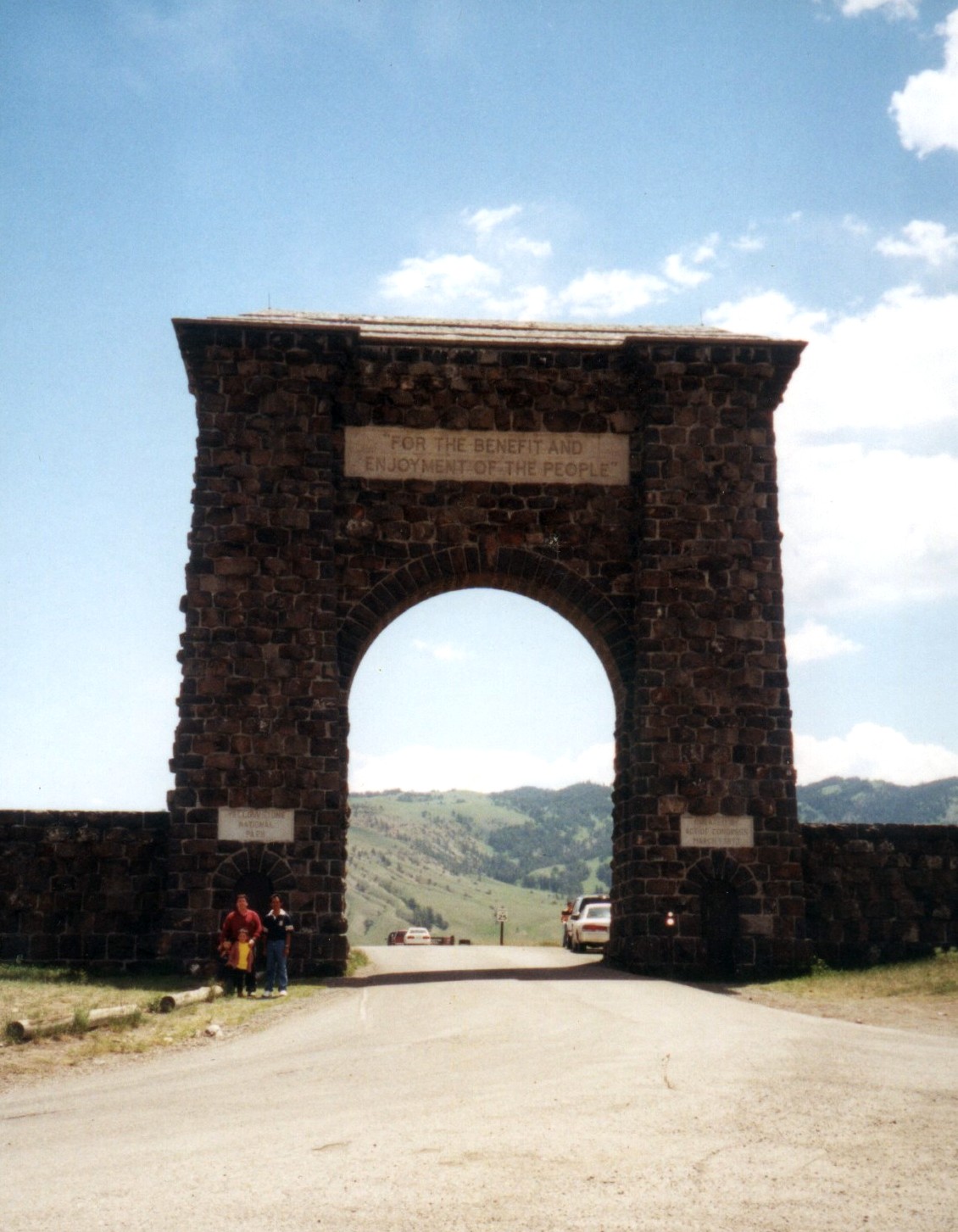Text and Photos by Henrylito D. Tacio
In 1870, explorers gathered around a campfire at the junction of two pristine rivers – Missouri and Columbia – overshadowed by the towering cliffs of the Madison Plateau. They discussed what they had seen during their exploration and realized that this “land of fire and ice” and “wild animals” needed to be preserved.
It is a wonderful story – and a myth. But those men were real, and so is this land they explored. Thanks to their reports and the work of explorers and artists who followed thereafter, the United States Congress established Yellowstone National Park in 1872.
“For the Benefit and Enjoyment of the People.” These words, as seen on the Roosevelt Arch located at the North Entrance to the park, were excepted from the Act of Dedication, which established Yellowstone as the world’s first national park. President Ulysses S. Grant signed the law on March 1, 1872.
With a total land area of 3,472 square miles, Yellowstone National Park is larger than the states of Rhode Island and Delaware combined!
On October 26, 1976, the United Nations Education, Scientific, and Cultural Organization designated the park as a Biosphere Reserve and a World Heritage Site. “Yellowstone National Park is recognized as part of the international network of protected samples of the world’s major ecosystem types (and) is devoted to conservation of nature and scientific research in the service of man,” it said.
Americans often described the Yellowstone National Park as “a treasure that inspires awe.” That was my observation, too, when I visited it recently. Ditto for foreigners who were with us during the visit, including those from Japan, Singapore, and India. My sister Elena and her husband, Daniel Chase, brought me to this place.
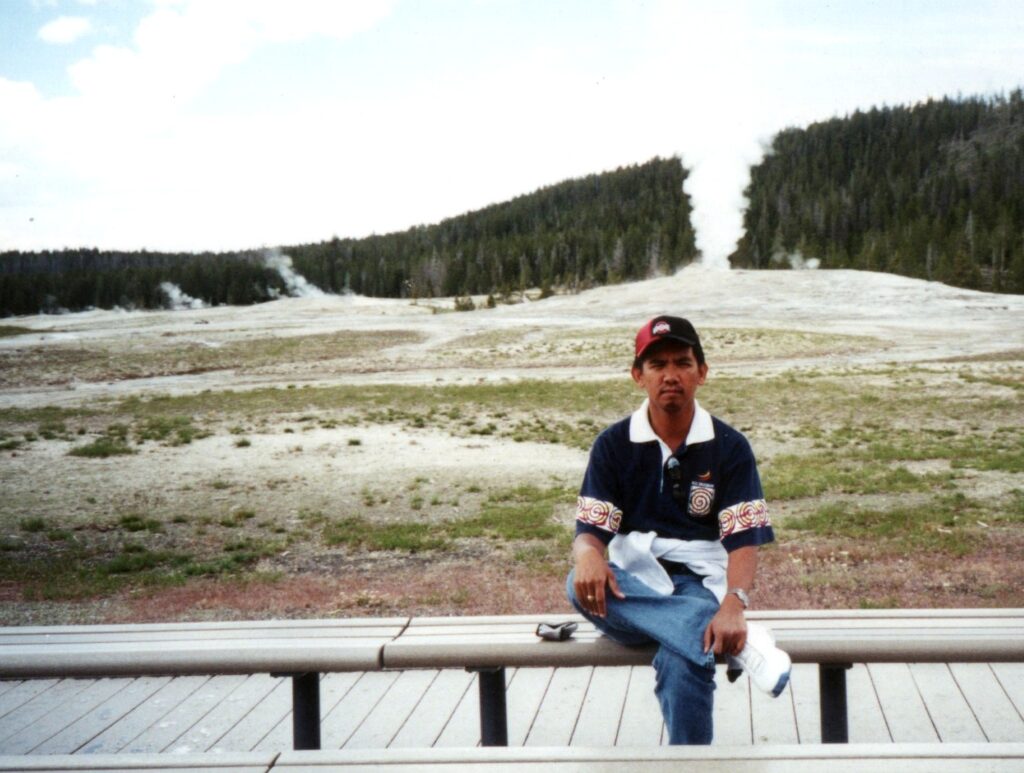
After all, Yellowstone National Park is one of America’s most often visited areas. A record year was in 1992 when three million people came to see the park. I was told that even during the winter months, visitors still come.
But what intrigued me was what it is called Yellowstone. In fact, you won’t see much yellow out there, save for the rocks. Research showed that the place got its name from the river that runs through the park.
When French-Canadian trappers reportedly encountered the Minnetaree tribe living along the river in what is today eastern Montana, they asked about the river’s name. The Minnetaree responded, “Mi tse a-da-zi,” which translates as a “rock yellow river.” (Historians do not know why the Minnetaree gave this name to the river.) The trappers translated into French, roche jaune, or pierre jaune.
In 1979, explorer-geographer David Thomson used the English version – “yellow stone.” American explorers Captain William Clark and Meriwether Lewis called the Yellowstone River by the French and English forms. Subsequent usage formalized the name as Yellowstone.
In the midst of the park is Yellowstone Lake, considered the largest high elevation lake (above 7,000 feet) in the Western Hemisphere. It has more than 100 kilometers of shoreline. Its deepest spot is approximately 390 feet deep. With the Absaroka Mountains as a stunning backdrop, the lake is breathtaking. Among the things you can do: boating, fishing, hiking, and wildlife viewing.
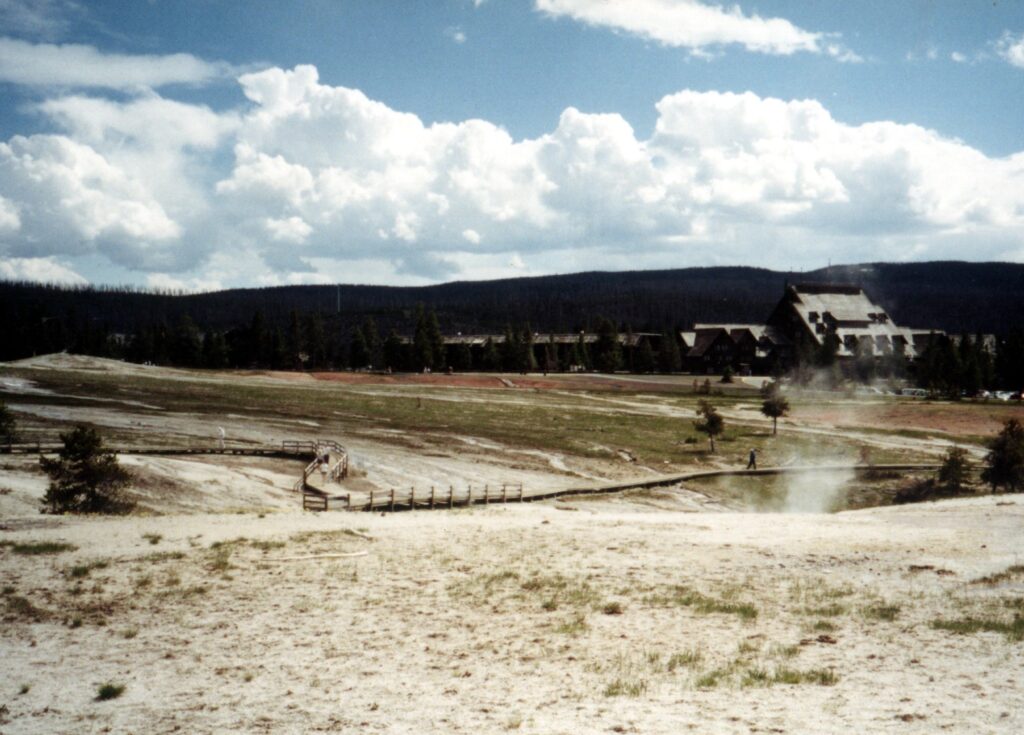
Follow the pathway 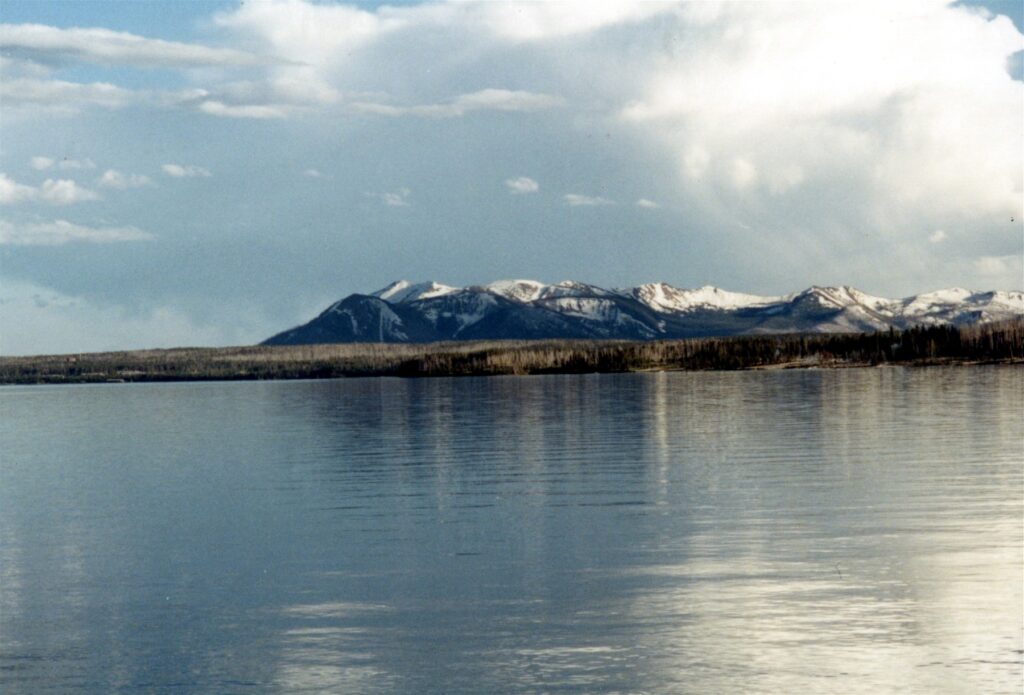
Yellowstone Lake
But one of the park’s come-ons is the Yellowstone River, which figured prominently in the Robert Redford flick, A River Runs Through It. “I won’t leave this river,” said the character played by Hollywood heartthrob Brad Pitt in the film.
“The current of this beautiful and great river is very great,” wrote fur trader Antoine Larocque in an account of his trip up the Yellowstone. “These rapids, this river, they never rest,” Marty Stouffer pointed out.
The National Geographic described the Yellowstone River, which flows from the national park to the Missouri river at the Montana/North Dakota border, as “the last best river.”
The free-flowing Yellowstone is marked by such natural wonders as Upper Falls, Lower Falls, Grand Canyon, Yankee Jim Canyon, and Paradise Valley.
At the heart of Yellowstone’s past, present, and future lies volcanism. Yellowstone’s volcanic geology provides a classic example of a geyser. In fact, it is home to five geysers, namely, Old Faithful, Castle, Grand, Daisy, and Riverside, which are predicted by the park’s “interpretative staff.”
Old Faithful’s average interval between eruptions is about 88 minutes, varying from 45-120 minutes, and reaches a height of 32.3 to 56 meters. When we arrived at the scene, hundreds of people — who were waiting for several minutes already — were getting ready for their cameras to shoot the famous eruption.
Old Faithful is located in the Upper Geyser Basin, where most of the world’s geysers are concentrated. Another favorite performer is the Beehive geyser, which erupts twice daily, and its display lasts four to five minutes.
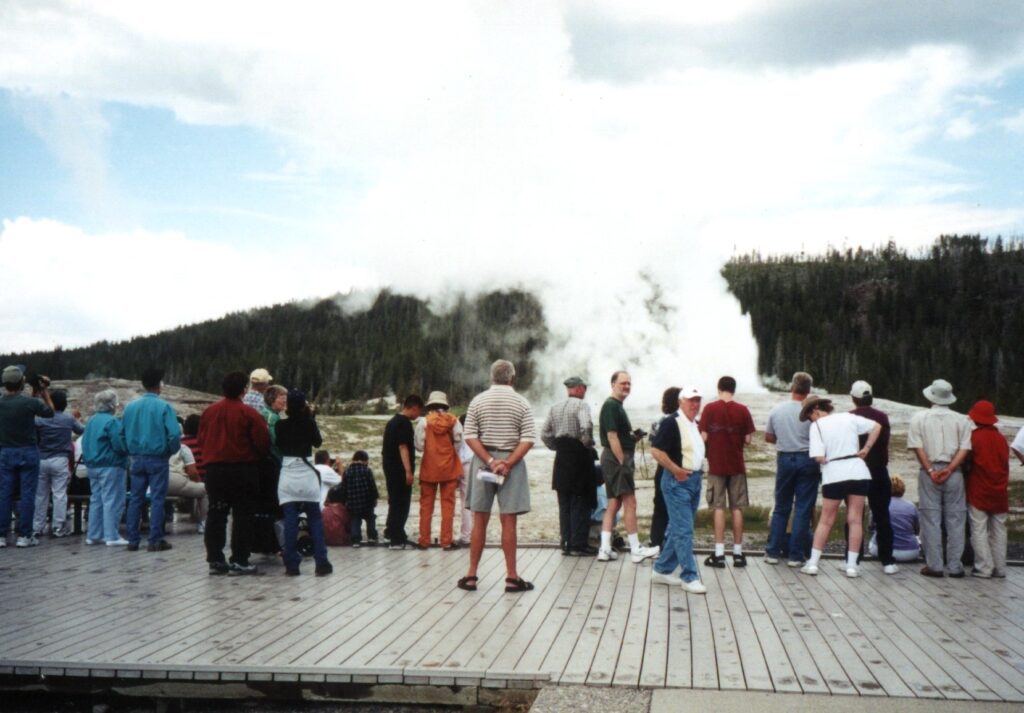
The Lion Group consists of four geysers: Little Cub, Lioness, Big Cub, and Lion. Lion has the largest cone and erupts up to 15.24 meters feet for one to seven minutes. If you witness its eruption, you might hear how this geyser got its name: the eruption is often preceded by sudden gushes of steam and a deep roaring sound.
Meanwhile, the doublet pool is famous for its series of ledges, elaborate border ornamentation, and deep blue waters. Doublet produces vibrations, surface wave motion, and audible thumps — most likely caused by collapsing gas and steam bubbles.
You can see all of these geysers by walking in the boardwalks but never walk off the boardwalks. “Geyser basins are constantly changing,” a staff member of the visitor center reminded us. “Boiling water surges just under the thin crust of most geyser basins, and many people have been severely injured when they have broken through the fragile surface.”
The park is a haven for wildlife. Just bear this in mind, though: all wild animals are unpredictable and dangerous. Yellowstone is considered a bear country. People have been seriously injured, maimed, and killed by bears.
My sister’s husband, Engr. Daniel Chase, shared this advice: Do not approach a bear under any circumstances. Observe them at a safe distance; it is illegal to approach on foot within 100 yards of bears.
If you have the opportunity of coming to visit Yellowstone National Park, don’t forget to bring your own camera. Annually, more than 600,000 people visit the park. Some of them capture memories with a video camera; others use standard still photography; a few use digital equipment. Whatever camera you are using, please bear this in mind: Avoid surprising wildlife. Keep a safe distance, and move slowly. Binoculars will help enhance viewing from afar.
By the way, don’t worry about places where you can stay, take a rest or sleep. There are plenty of hotels and lodging houses within the park. Restaurants also abound.
During the summer season, commercial businesses offer tours. During the winter season, some businesses provide snowcoach tours for most park roads or bus transportation on the Mammoth Hot Springs to Cooke City road. There is no public transportation within the park.
How do you get there? Commercial airlines serve the following airports near the park all year: Cody and Jackson both in Wyoming, Bozeman and Billings in Montana, and Idaho Falls, in Idaho. The West Yellowstone airport, also in Montana, is open from June to early September.

